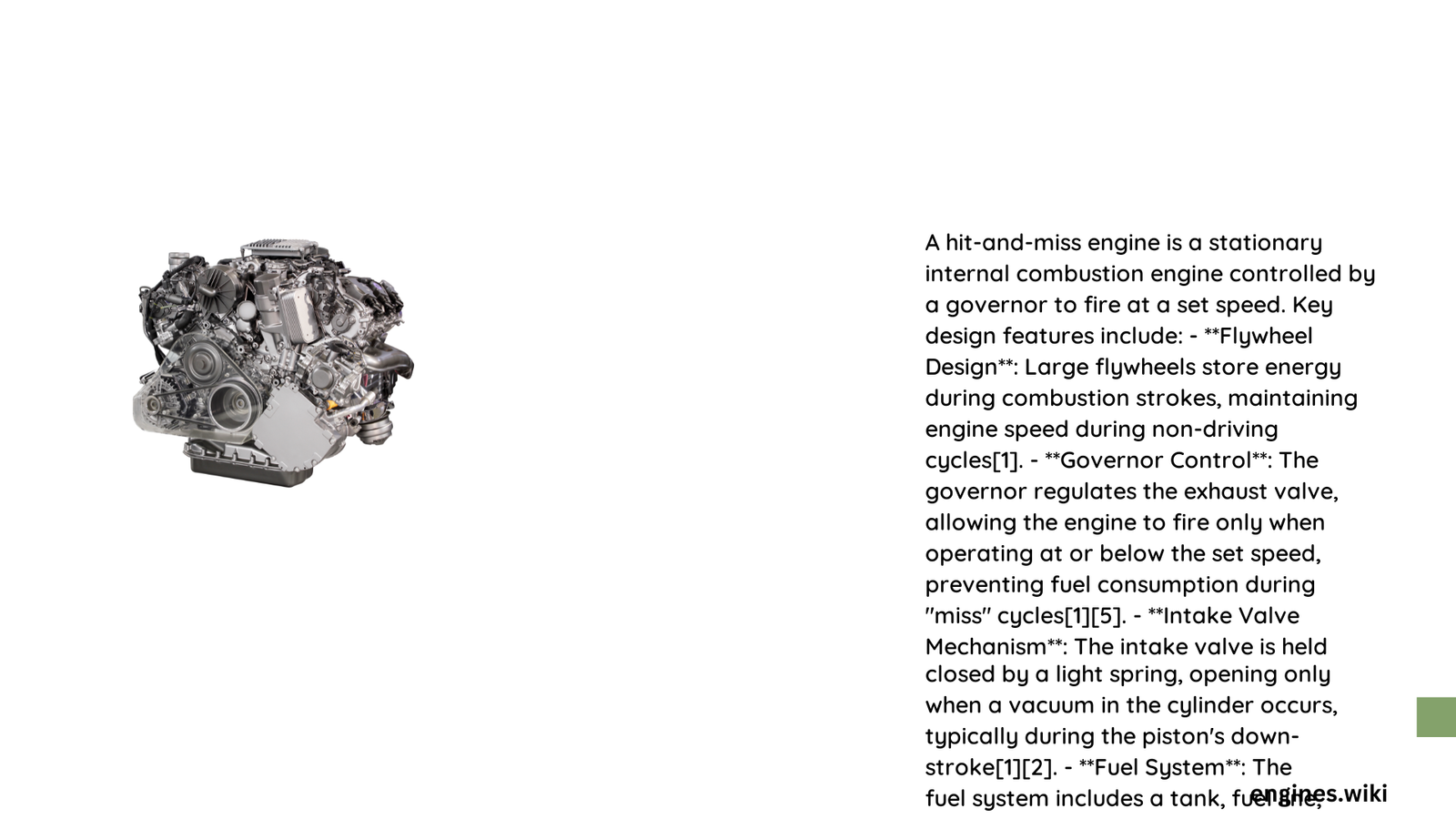Hit and Miss Engine Design: A Technical Overview
Hit and miss engines represent a fascinating chapter in mechanical engineering history, embodying early 20th-century industrial innovation. These remarkable power systems utilized a unique governor mechanism that controlled engine speed by selectively firing cylinders, making them revolutionary for agricultural and industrial applications. Their design emphasized mechanical simplicity, durability, and adaptability to varying load conditions.
What Makes Hit and Miss Engines Unique?
Hit and miss engines distinguish themselves through several critical design characteristics:
- Governor Mechanism
- Controls engine speed dynamically
- Allows engine to “miss” firing cycles under light loads
-
Prevents unnecessary fuel consumption
-
Operational Principles
- Low-speed power generation
- Robust mechanical construction
- Minimal maintenance requirements
How Do Hit and Miss Engines Achieve Power Regulation?
Valve Control Mechanism
The engine’s governor directly influences valve operation through a sophisticated mechanical linkage:
| Component | Function | Interaction |
|---|---|---|
| Governor Weight | Speed Detection | Monitors Rotational Velocity |
| Exhaust Valve | Power Regulation | Opens/Closes Based on Governor Signals |
| Intake Valve | Fuel Management | Controlled by Vacuum Principles |
What Materials Defined Hit and Miss Engine Construction?
Hit and miss engines predominantly utilized cast iron for critical components, providing exceptional durability and heat resistance. Key material selections included:
- Cylinder Block: High-grade cast iron
- Crankshaft: Forged steel
- Flywheel: Cast iron with precision balancing
- Valve Components: Hardened steel alloys
What Were Typical Performance Characteristics?
Performance metrics for hit and miss engines varied, but general specifications included:
- Compression Ratios: 3.5 to 5:1
- Operational RPM: 200-500 rotations per minute
- Thermal Efficiency: 10-15%
- Typical Horsepower: 4-10 HP
How Were Hit and Miss Engines Assembled?
Assembly process involved meticulous steps:
- Crankcase preparation
- Cylinder block alignment
- Crankshaft installation
- Valve train configuration
- Governor mechanism calibration
- Flywheel attachment
What Challenges Did Engineers Face?
Engineers confronted multiple design challenges:
- Limited manufacturing tolerances
- Fuel quality variations
- Mechanical complexity of governor systems
- Heat dissipation management
Troubleshooting Common Hit and Miss Engine Issues
Diagnostic Checklist:
– Verify fuel mixture consistency
– Inspect governor mechanism
– Check valve clearances
– Examine compression integrity
– Validate ignition system performance
Conclusion
Hit and miss engine design represents a pivotal moment in mechanical engineering, bridging traditional craftsmanship with emerging industrial technologies. These engines symbolize innovation, demonstrating how mechanical ingenuity could solve complex power generation challenges.

